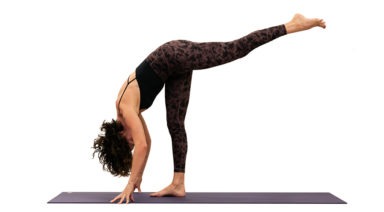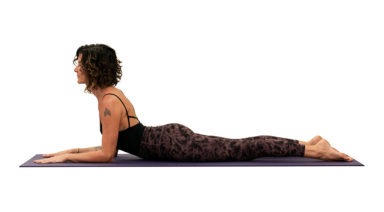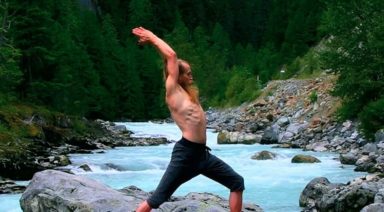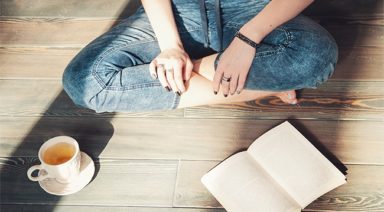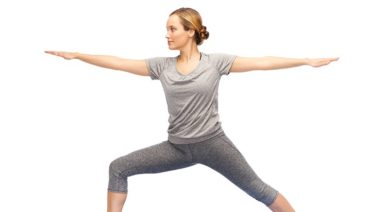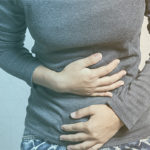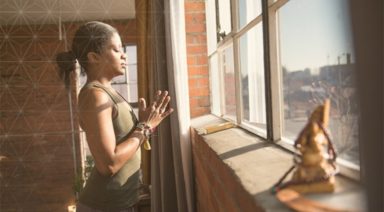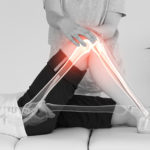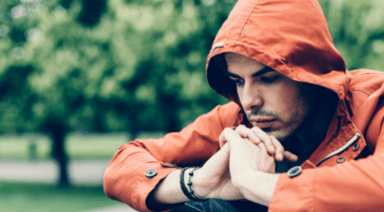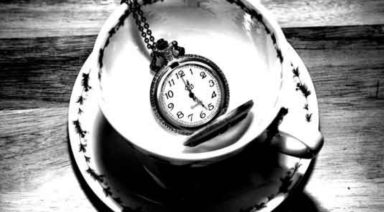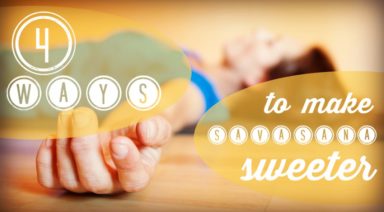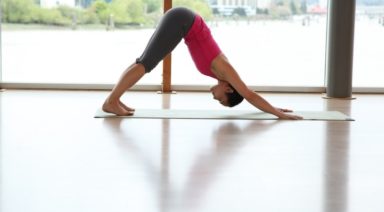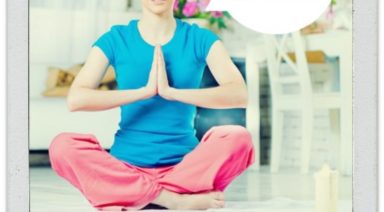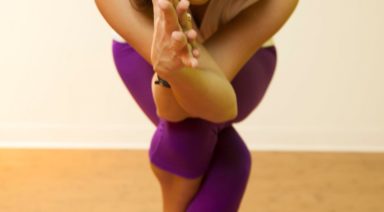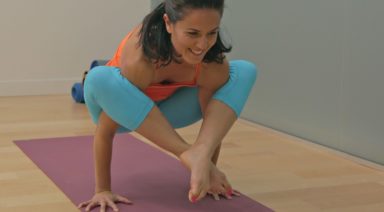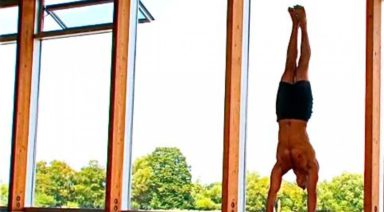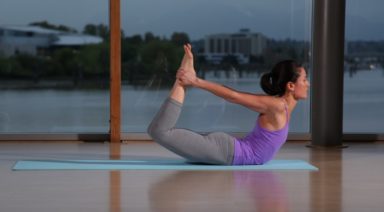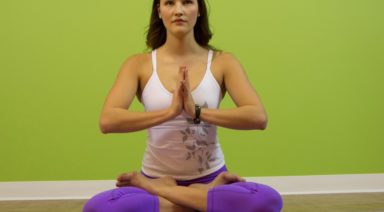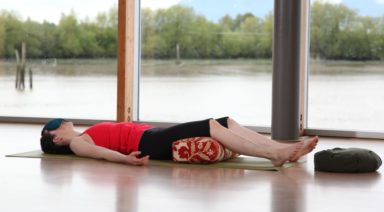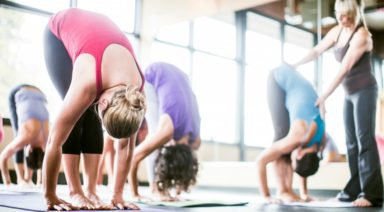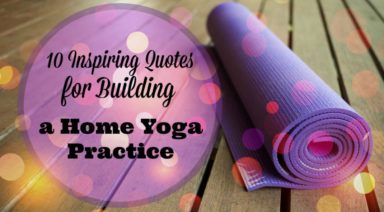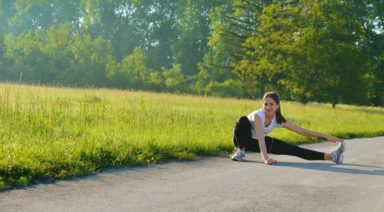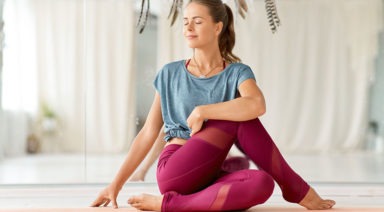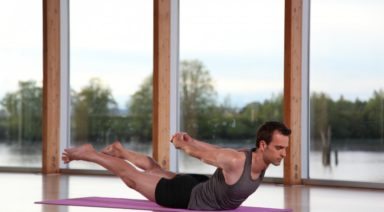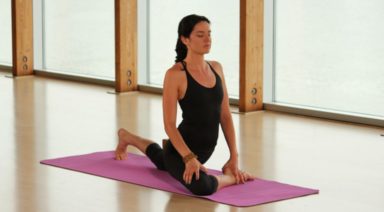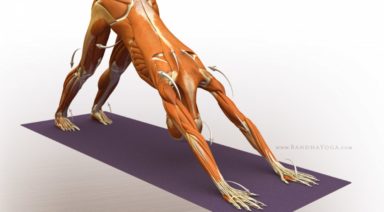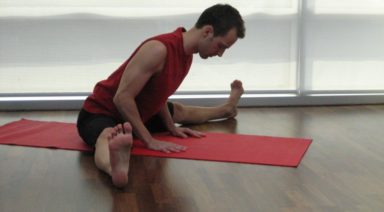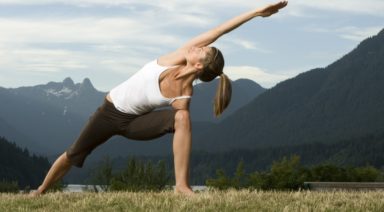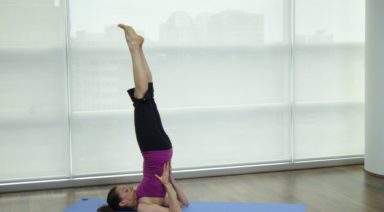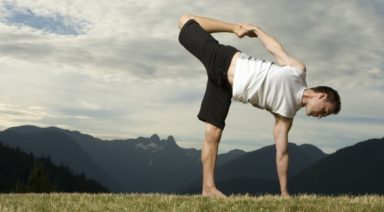Urdhva Dhanurasana: Upward Facing Bow Pose
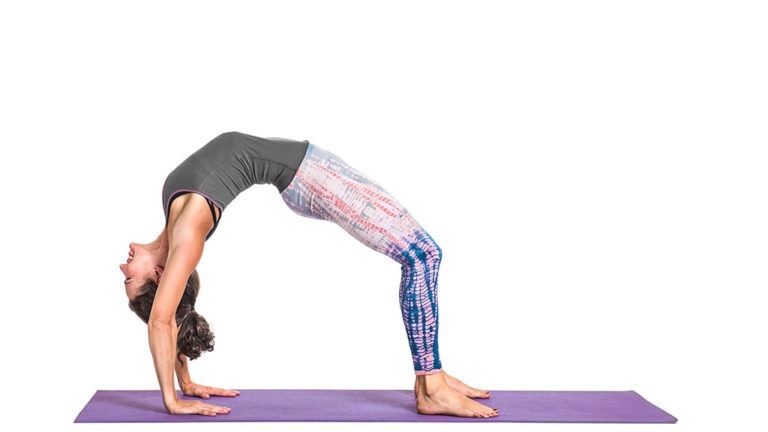
ADJUSTMENTS | BENEFITS | SEQUENCING | SANSKRIT | STEPS
Urdhva dhanurasana (OORD-vah don-your-AHS-ah-nah) is a deep backbend that can cultivate flexibility, strength, and patience.
Philosophy + Origin
Urdhva dhanurasana is thought to increase the vital life force in the body, specifically around the heart. When practiced regularly and with dedication, even if the “full” pose is never achieved, upward facing bow pose can awaken courage, compassion, and radiance in the mind and spirit.
ADJUSTMENTS/MODIFICATIONS:
- Blocks on the wall: Place two blocks against a wall, about shoulder distance apart. Place your hands on the blocks as you move into urdhva dhanurasana to help elevate your upper body and better engage your shoulder blades.
- Strap: Use a strap around your upper arms to prevent the elbows from splaying as you press upward.
- Block: Place a block between your thighs to keep your lower body engaged.
- One-legged: Try out eka pada urdhva dhanurasana by lifting up one leg at a time.
STEP-BY-STEP:
- Lie on your your back with your knees bent, feet on the floor, like you’re moving toward bridge pose.
- Place your palms on the ground beside your ears, fingertips facing your shoulders.
- Press into your feet, especially the big toe ball mound.
- Exhale to lift your tailbone and hips off the floor. Squeeze your thighs toward each other so your knees point straight ahead.
- Press into your hands to bring the crown of your head to the ground. Pause here for a breath.
- Draw your shoulder blades down your back while keeping elbows in line with shoulders. Press into your feet and hands equally.
- Exhale to straighten your arms and lift your head off the floor.
- Squeeze your inner thighs toward each other and down toward your mat (internal rotation). Lengthen your tailbone toward the back of your knees.
- Drop your head all the way back if comfortable.
- Hold the pose for up to a minute with a steady, long breath. Lower down and rest, option to repeat.
PREPARATORY POSES:
- Bridge pose | Setu bandha sarvangasana
- Camel pose | Ustrasana
- Upward facing dog | Urdhva mukha svanasana
SEQUENTIAL POSES:
- One-legged upward-facing bow | Eka pada urdhva dhanurasana
- Natarajasana | Dancer’s pose
COUNTER POSES:
- Head to knee pose | Janu sirsasana
- Knees to chest pose | Apanasana
- Savasana
SANSKRIT:
- Urdhva = upward
- Dhanu = bow
- Asana = pose
BENEFITS:
- Expands chest, lungs, and shoulders.
- Stretches hip flexors, muscles of the abdomen, and wrists.
- Strengthens glutes, hamstrings, and lower back muscles.
- Thought to increase vitality.
Legal Disclaimer Before participating in any exercise program or using any fitness products or services that may be described and/or made accessible in or through the Gaia Website and/or the Services, you should consult with a physician or other healthcare provider. Read more about Gaia’s Terms Of Use.
Urdhva Prasarita Ekapadasana: Standing Splits Pose

ADJUSTMENTS | BENEFITS| SEQUENCING | SANSKRIT | STEPS
Urdhva prasarita ekapadasana (OORD-vah pra-sa-REE-tah EH-kah pahd-AS-ah-nah) is a great pose for practicing balance and increasing flexibility in the hamstrings. Standing splits also helps stabilize the hips and pelvis (with correct, closed-hip alignment), making it a great pose for building a solid foundation for your asana practice.
Philosophy + Origin
A variation of Hanumanasana (front splits pose), standing splits requires many of the same physical attributes and awareness. This version of the splits is physically challenging and asks to respect where you are today. Think of your lifted leg as an opportunity to strive and your lower leg as a reminder to be patient with your capacity at this moment.



